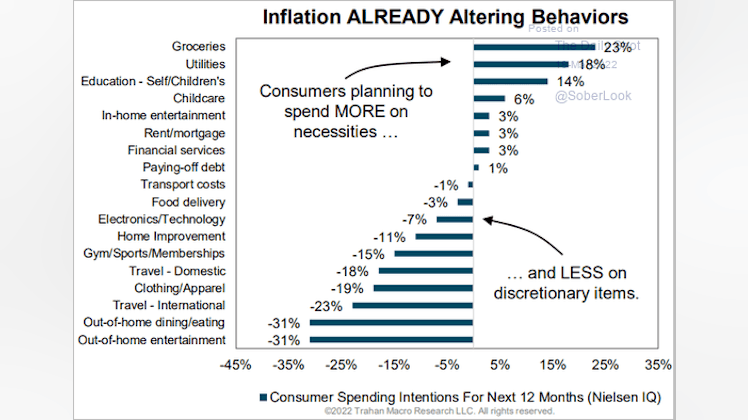Marshall Wace was founded 25 years ago by Ian Wace and Paul Marshall. The firm runs both systematic and fundamental strategies and manages over
$55bn. It is famous for running the TOPS alpha capture system which polls investment ideas from the sell-side.
This little book brilliantly boils down nearly 35 years of investing and, even more importantly, business experience.
Although it is absolutely worth reading in full (and takes no time), I thought a nice summary would help highlight these fantastic insights.
Lesson 1: Real markets are inefficient. There is a great disconnect between how academics (from
Walras to
Fama) view financial markets, as largely efficient, and their true nature, characterised by fat tails (as described by
Mandelbrot) and
reflexivity (Soros’ idea that prices influence fundamentals).
Lesson 2: People are deeply fallible.
“Their perspective is bound to be either biased or inconsistent or both”. This is to say people are prone to
behavioural biases like being too optimistic, viewing abnormal events as reverting to historic patterns, being overconfident, anchoring to initial information, and seeing all new evidence as confirmation of beliefs.
When combined together, these biases lead to a fragile system as described by the
Minsky cycle. Periods of stability sow the seeds for future bouts of instability. This is a recognisable and predictable pattern of human behaviour and exploited for example by
Marathon’s capital cycle investing philosophy.
Lesson 3: Investment skill is measurable and persistent. “We have found that the most important ratio for digging below the surface is the success ratio – the percentage of winning trades – the Americans call it the ‘batting average’”. A truly great manager will have a success ratio of 55% i.e. you can be wrong 45% of the time.
Is there
a feature common among these great managers? “
Perhaps above all they have to be resilient.” All managers have bad periods and no manager (apart from
Druckenmiller) has not had at least one bad year. Interestingly, they find that the reddest flag of underperformance in TOPS are problems at home.
Lesson 4: In the short term the market is a voting machine, in the long term it is a weighing machine. The voting side is best understood by Keynes who said – “successful investing is anticipating the anticipation of others”. The weighing machine side is the domain of fundamental analysis. This demarcation is the reason Marshall Wace runs both systematic and fundamental strategies.
Lesson 5: “The greatest opportunities always occur around change”. This is embodied in the idea of “valuation with a catalyst”. Valuation is a story and catalysts make that story complete. Markets love stories. Quality investing is the opposite of this form of investing.
These approaches are not mutually exclusive – “the best that can be said today is that the market is not good at predicting competitive advantage periods and frequently errs in both underestimating and overestimating the speed of change”. One way to take advantage of this is to scrutinise industry structures and sector level dynamics – because “not enough investors do it”.
Lesson 6: Concentration and Diversification. Concentration requires a high win/loss ratio, no position can be sleeping. Diversification’s advantages are mathematically proven. It is hard to reconcile these at an individual portfolio level but at the business/client level one can hold a diversified portfolio of concentrated portfolios.
Lesson 7: Shorts are different to longs. Alpha is easier to generate on the long side. Shorts are hard because they cost money to hold, involve competition in the borrowing market against other hedge funds, depend widely on regime (bull markets last 7 years, bear markets 1.5), and in theory have unlimited losses.
Shorts also see a rapidly falling Sharpe ratio as they go in your favour (financial leverage increases and they get more crowded) but increasing position size if they go against you. Good shorts are often a combination of weak or deteriorating growth, poor industry structure, regulatory pressure, dodgy accounting, and weak and deteriorating balance sheets.
Lesson 8: Machines are getting better and better especially as the amount of data balloons. Marshall Wace process 7.5 petabytes of data per day, which they expect to rise to 20 in three years. But machines aren’t good in crisis nor paradigm shifts nor at picking sectors. So there will always be room for humans but they need to adapt to use machines along side them.
Lesson 9: Risk management is key – you need to hold a prudential margin to protect against the “unknown unknowns”. How? (1) Use leverage but limit it (Marshall Wace runs a max gross of 400%, vs 700-800% for peers) and (2) Watch liquidity (they never own more than 5% of any stock). “Never be in a position where a stock owns you”.
Lesson 10: Size matters. Though one needs $350m to breakeven in a hedge fund these days, the temptation to get very big is high. Size leads to non-linearly scaling trading costs and huge liquidity footprints. They found that most good managers can deliver strong alpha up to $1bn of capital, very few can do so persistently above $3bn.
Lesson 10 1/2: Most fund management careers end in failure. This relates mainly to character. On the one hand there is dealing with downside – it is very hard to be wrong even 45% of the time. Decision making freezes up.
On the other is hubris. Ancient Rome had a good approach to hubris. A winning general would be given a huge parade on his return. At the end of it the general would ride in a chariot to the centre of Rome. In his chariot he would be accompanied by an ‘Auriga’ (a slave with gladiator status) who would whisper in the general’s ear – “memento Mori”, remember you are mortal.







